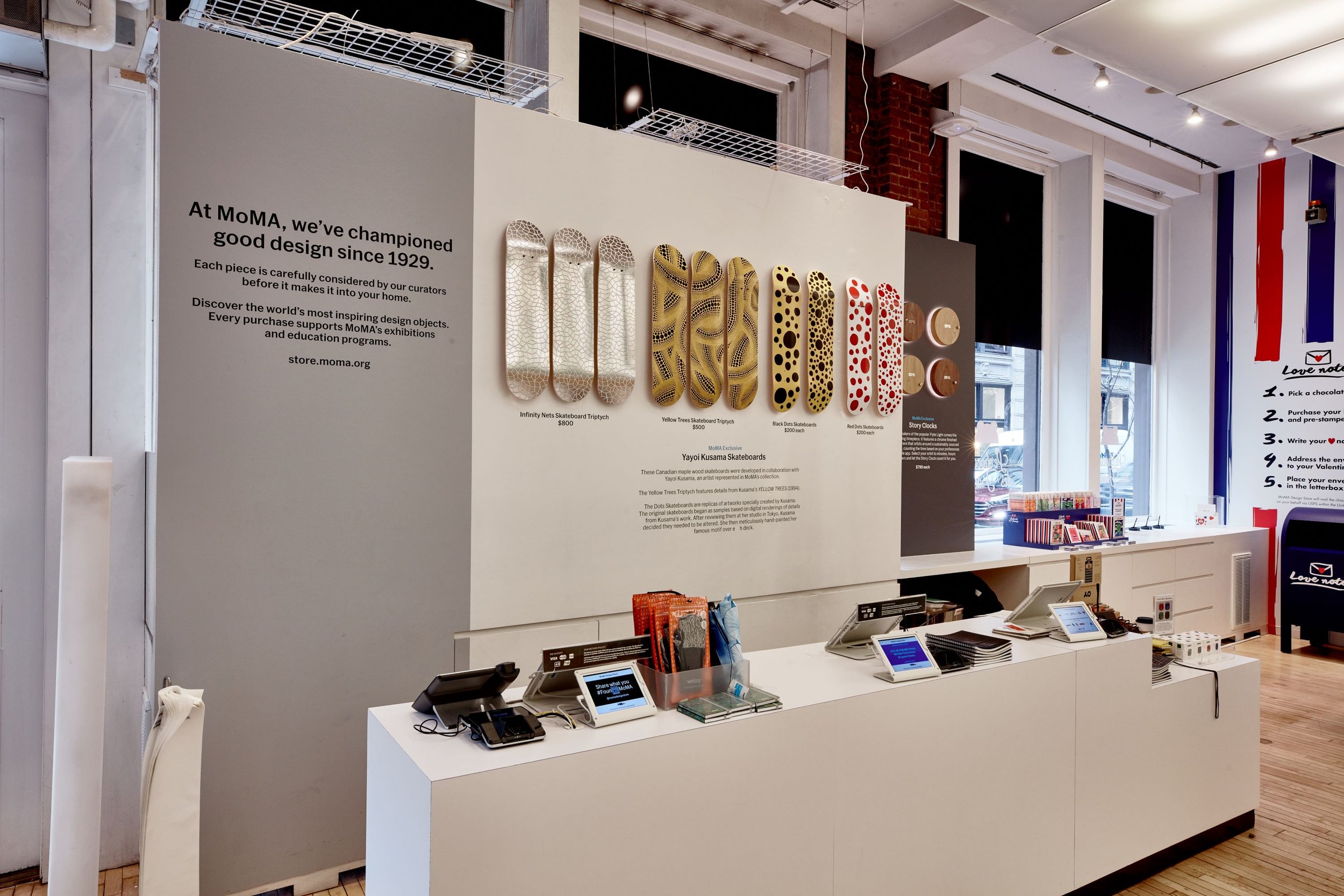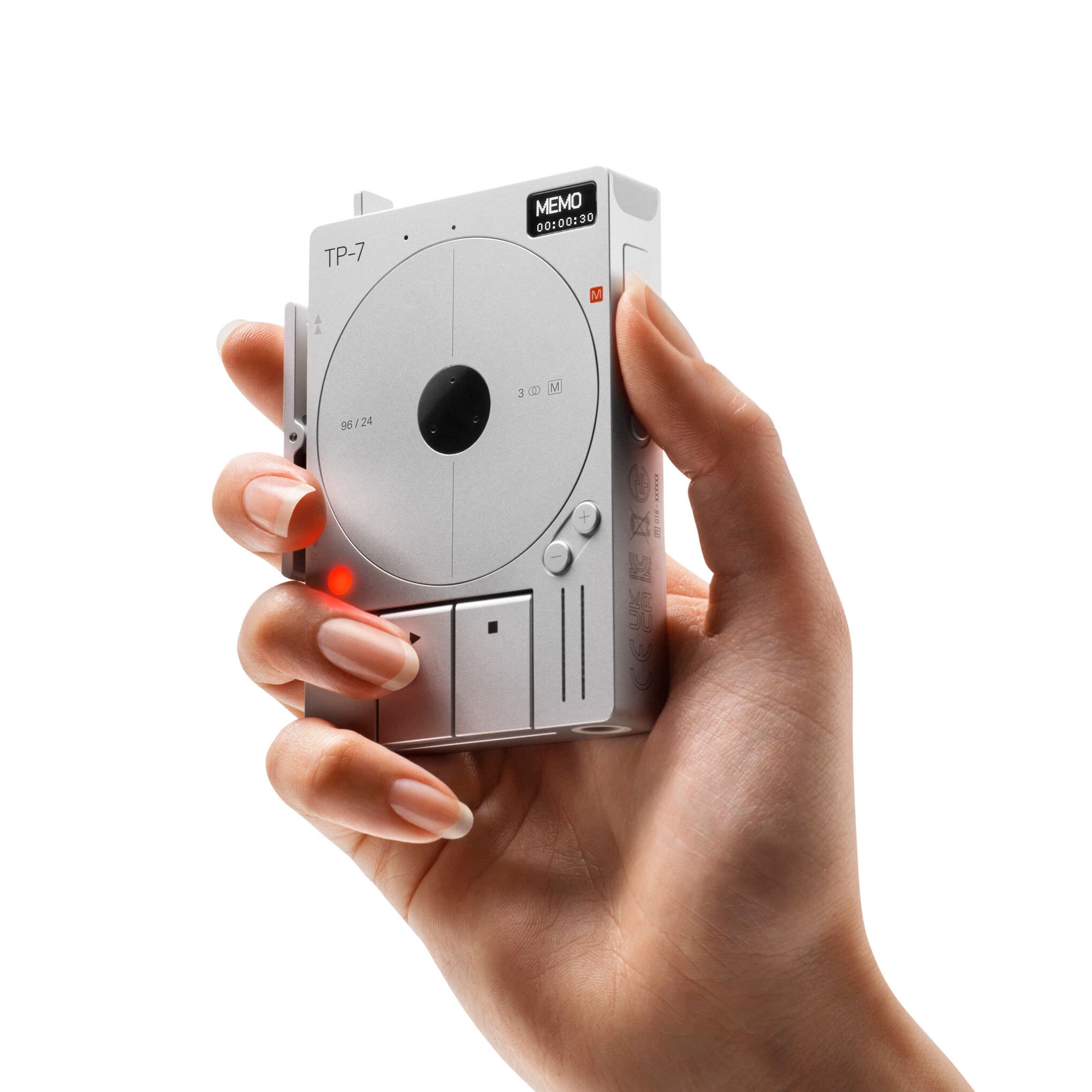Conversation with Emmanuel Plat, Director of Merchandising, MoMA Retail
On turning the traditional museum store model on its head
By Ian Tee
Emmanuel Plat, Director of Merchandising, MoMA Retail. Image courtesy of MoMA Design Store.
Emmanuel Plat is Director of Merchandising, at Museum of Modern Art (MoMA) Retail in New York City. He has played the lead role in shaping the merchandising strategy for MoMA Design Store since joining the team in 2012. Prior to this appointment, Emmanuel built a 19-year career in merchandising, marketing and administration with the Conran Group.
In this interview, we discuss the museum shop as a space where the curation, retail and branding meet. Emmanuel speaks in depth about the strategic directions taken for MoMA Design Store, how his team works with MoMA curators to build a cohesive brand identity and their plans for engaging local and international audiences across physical and online platforms.
This conversation is the first entry in a new series of Art x Business stories.
Flagship MoMA Design Store in the recently revamped Museum of Modern Art, New York City. Image courtesy of MoMA Design Store.
I would like to start the interview by asking you to briefly explain where MoMA Design Store sits within the larger MoMA organisation?
MoMA Retail supports MoMA’s mission to educate the public about modern art and Good Design. Every purchase at MoMA Design Store supports the museum’s groundbreaking exhibitions, the preservation of its collection, and a wide range of education programmes. The collaborative relationship between MoMA Retail and the museum’s curatorial department is integral to MoMA Design Store’s DNA and what sets us apart.
Through a rigorous selection process, our merchandising team—including myself, our Associate Director of Merchandising and Product Development, Chay Costello, and a total of six buyers—work together to help visitors discover the power of Good Design as a testament to MoMA’s mission to archive, collect, exhibit, and even sell the best the industry has to offer.
Our broad assortment of products from art books and reproductions to kitchen and tabletop items, desk and personal accessories, tech products and gadgets, furniture and lighting, are all inspired by MoMA’s collection and exhibitions.
MoMA Design Store was founded in 1989 and has since evolved into a highly recognisable platform. How would you describe the store’s mission today? And how does this mission frame the relationship among retail, the curatorial, and brand image?
MoMA has been selling postcards and art reproductions since the early days of the museum’s founding nearly a century ago. What started as a modest courtesy desk for museum visitors in 1930 has evolved into a successful, omnichannel business.
MoMA was the first museum to establish a department dedicated to architecture and design and to begin collecting design objects—recognising their role in our culture, and how we live with these items in our homes and daily lives. This foundational DNA continues to inform our assortment and thinking every day, whether the product is tabletop, apparel, furniture, toys, jewellery, or tech.
Today we operate a truly global omnichannel business. Beyond our stores within the museum, we have locations in Soho and Midtown, and licensed stores in Japan and Hong Kong, plus our rapidly growing ecommerce business. We also have global license collaborations with brands such as Bodum, Nike, Uniqlo, Swatch, Lego and Samsung.
MoMA Design Store’s unique focus on design, supported by the MoMA brand, sets it apart from other museum retail operations. Building on the museum’s legacy of recognising architecture and design as an important aspect of modern art, MoMA Design Store makes Good Design accessible to a diverse customer base. We have become recognised by designers as a key platform to launch new products, and we have a great track record of being the first to bring new products and brands to market that go on to achieve long-term success.
Flagship MoMA Design Store in the recently revamped Museum of Modern Art, New York City. Image courtesy of MoMA Design Store.
Could you talk about the process of working with MoMA curators in reviewing products for the store?
Our approach is item-driven, meaning we identify exceptional products that best exemplify important design movements, collections, or designers rather than attempting to create a comprehensive catalogue within a single category.
The collaborative relationship between MoMA Retail and the Museum's curatorial department is fundamental to our approach. Before any product is brought into our assortment we consider, “Why MoMA?” Together, we evaluate each potential addition through a set of evolving design filters, ensuring that every item aligns with our commitment to Good Design. For example, we look at whether a designer is represented in MoMA’s permanent collection or has been featured in an exhibition, and whether the product is crafted from innovative materials or addresses a particular problem. We also consider its educational value, sustainability, and how it reflects gender and cultural diversity. Only products that truly resonate with these values make it into our assortment.
The best-selling MoMA NY Yankees cap which was first launched in 2017. Image courtesy of MoMA Design Store.
In addition to items sourced from your team’s travels, there are also products developed and released in conjunction with MoMA exhibitions. In your opinion, what qualities make exhibition merchandise compelling?
Part of the Museum’s mission is to spread an understanding and enjoyment of modern art and ideas of our time to audiences around the world. MoMA Design Store is one of the important ways we do this. In the last year or so, we have been having a lot of conversations about conceptually turning the traditional museum store model on its head. You usually think about exiting through the museum store but what we are seeing is more and more people are first encountering MoMA through our products.
We have seen some of our products go international and even viral like The MoMA NY Yankees Cap. We started selling them in 2017, in celebration of the exhibition ‘Items: Is Fashion Modern?’ Since then, it has been a top 10 best-selling product, both online and in stores, with over 200,000 hats sold to date. The cap has gained notoriety and influence as a symbol of New York City culture and style, evidenced by over 300 5-star customer reviews, many of which mention MoMA and the Yankees as two favourite institutions in the city. We continue to work with New Era each season to release the cap in new colours, meeting customer demand. Additionally, we draw inspiration from its success when seeking new and impactful designs to bring into our assortment. We have also seen through surveys that having MoMA’s name on products globally and showing up on social media, is translating to museum visitation in a meaningful way.
“You usually think about exiting through the museum store but what we are seeing is more and more people are first encountering MoMA through our products.”
MoMA Design Store in Tokyo, its first physical location outside of the United States. Image courtesy of MoMA Design Store.
MoMA Design Store at K11 MUSEA, Hong Kong. Image courtesy of MoMA Design Store.
Currently, there are six MoMA Design Stores: three locations within New York City, in Tokyo, Kyoto, and most recently in Hong Kong. Could you talk about the decision to focus on Asia?
MoMA has always been very popular with Asian audiences. We have lots of visitors to the museum travelling from Asia. We have been fortunate enough to find very good partners both in Japan and Hong Kong that have represented the MoMA Design Store brand with great success. It is a way to diffuse MoMA beyond New York City and offer our customers an opportunity to “access” a piece of MoMA from abroad. Part of our mission is to introduce and educate audiences to modern and contemporary art and design. The stores are a vehicle to achieve this.
“It is a way to diffuse MoMA beyond New York City and offer our customers an opportunity to “access” a piece of MoMA from abroad.”
What is your strategy or aspiration when it comes to balancing physical retail and online presence?
It is something we are very passionate about. Certain products cater specifically to store audiences, such as visitors wanting a memento from MoMA. Other products are exclusively sold online simply because of space limitations in the stores. However, the majority of our products—including all our key products—are available across all channels. We have spent a large amount of time thinking about the best ways for our customers to experience our products, whether they are visiting us in person or shopping online. Over the past few years, we have become much better storytellers and significantly improved the quality of our content, photography and videos. We also have much better tools to reach out to our customers and segment our communication.
MoMA Design Store in Soho, New York City. Image courtesy of MoMA Design Store.
You have been Director of Merchandising at MoMA Design Store since 2012. Could you share one or two major turning point(s) during your tenure?
Firstly, I would like to say that I have one of the best jobs one could dream of. I feel very privileged to work for a world-class institution such as MoMA, but also with extraordinarily talented and inspiring colleagues.
One of the achievements I am most proud of has been to expand our product selection by offering a balanced assortment of accessible products and much more selective objects. One of the best examples is the Roland Kiyola Piano that we introduced exclusively at MoMA in 2018. While it retails for almost $5,000, it has been a constant best-seller season after season. It is about finding objects that resonate with people.
Another milestone has been the introduction of products by living artists. When I joined MoMA, we were conservative in our approach to art reproductions. Since then, we have collaborated and sold the works of artists such as Maurizio Cattelan, Olafur Eliasson, Yayoi Kusama, Takashi Murakami, Yoshitomo Nara, and Faith Ringgold, among others.
Teenage Engineering EP-133 K.O. II Extended Player. Image courtesy of MoMA Design Store.
Bodum Chambord Coffee Cups from the Bodum Bistro Pop-up. Image courtesy of MoMA Design Store.
Personally, what is a product category or specific items that you are particularly excited about and why?
There are many categories that I am excited about. I am interested in designers and manufacturers that push boundaries and develop objects that people didn’t know they needed. A good example of such is Teenage Engineering, which is one of the most innovative and creative companies in the audio and music industry. Their devices and instruments are very well designed but also extremely sophisticated. I am passionate about companies that make design accessible to everyone. Earlier this year, we collaborated with Danish company Bodum for an exclusive assortment for MoMA Design Store. The result has been very successful. By recolouring existing products, we give them a whole new identity.
What do you hope visitors to a MoMA Design Store pay attention to or take away with them?
Our customers come to us looking for products they can only get at MoMA Design Store. Whether we are developing an exclusive colourway, reissuing an archival product, entering into a licensing agreement or creating an entirely new design, our goal is to continually surprise and delight with products that cannot be found anywhere else. This makes us a great, inspiring destination. We are excited to be recognised by designers as a platform to launch exclusive products, with a track record of helping new brands succeed in the U.S. market.
Collection of MoMA Exclusive apparel inspired by Champion’s archives. Image courtesy of MoMA Design Store.
The Luna Luna popup show at MoMA Design Store in Soho. Image courtesy of MoMA Design Store.
Are there upcoming launches, projects or collaborations you wish to share?
We have many exciting product introductions this season. Highlights include a recently opened pop-up featuring merchandise inspired by the world’s first art amusement park, Luna Luna; a new iteration of Subu Slippers inspired by Henri Matisse’s work; boldly-patterned placemats by British-Nigerian artist Yinka Ilori; and a collection of MoMA Exclusive apparel inspired by Champion’s archives.
Our team is also developing new products for next year, partnering with U.S. manufacturers to expand existing collaborations, explore fresh possibilities, and cultivate long-term relationships. We are thrilled to introduce new licensing partners who align with our vision, bringing fresh and inspiring collections to the MoMA Design Store. Stay tuned for an exciting new pop-up launching in January! Additionally, we are continuing our multi-year collaboration with New York’s School of Visual Arts (SVA) to bring emerging talent and innovative designs to life in our stores.
Find out more about MoMA Design Store here.
This interview is the first entry in a new A&M series of Art x Business stories.
























